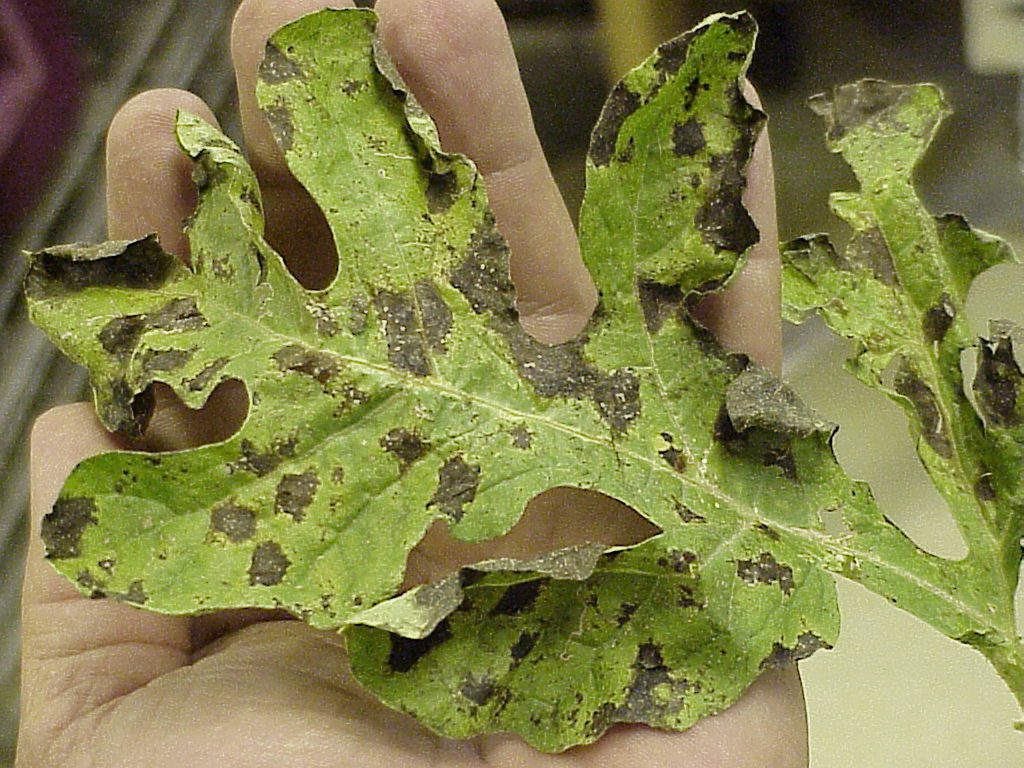By Clint Thompson
Downy mildew disease is present in cucurbits like squash and cucumber around South Florida and is getting worse.

According to the South Florida Vegetable Pest and Disease Hotline, respondents report that the disease is showing up in most watermelons and infections have increased in areas hit hard by rainfall.
“Around Manatee County, respondents report that downy mildew really kicked into high gear after the last rains and has been quite aggressive in some situations,” the hotline report stated.
Downy mildew also remains active on cucumber and some squash on the East Coast.
According to University of Georgia Cooperative Extension plant pathologist Bhabesh Dutta, downy mildew can destroy plant foliage and cause the leaves to curl and die. Without healthy leaves and vines, a plant is vulnerable to blisters and sunscald during hot days. The pathogen thrives in wet, humid conditions and needs moisture on the surface of the plant for successful spore germination and further infection.
Cucurbit crops — like cucumbers, melons, squashes and pumpkins — are susceptible to the disease. Dutta ranks downy mildew among the top diseases in cucurbit crops, along with Fusarium wilt and Phytophthora fruit rot.
How to Recognize Downy Mildew
For those vegetable farmers unfamiliar with what symptoms look like, focus on the leaves themselves. On cucurbits besides watermelon, small yellowish spots appear on the upper leaf surface away from the leaf margin. A yellow coloration later occurs with the internal part of the lesion turning brown. Lesions are usually angular as leaf veins restrict their expansion.
On watermelons, yellow leaf spots may or may not be angular and will later turn brown to black in color.
To control downy mildew, fungicide sprays are recommended for all cucurbits. Spray programs for downy mildew are most effective when initiated prior to the first sign of the disease. Once a plant becomes infected, it becomes more and more difficult to control with fungicides.









